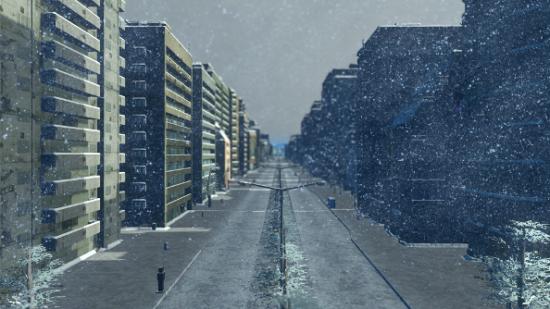When Paradox Interactive and Colossal Order announced Cities: Skylines – Snowfall, my initial reaction was excitement, knowing that – finally – I was getting another way to ruin the lives of my city’s denizens. I’ve poisoned the water supply with poo, I’ve flooded towns and I’ve filled whole maps with rotting corpses and garbage. Now I can freeze citizens to death. No, there’s nothing wrong with me.
Cities: Skylines earned a spot in our list of the best strategy games on PC.
First, though, I’ve got to make a city to freeze. Welcome to Ice River.
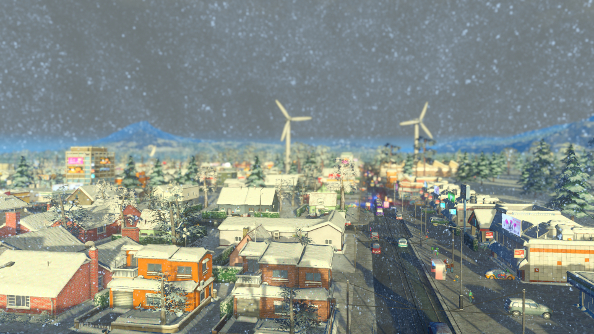
I am a mayor with ambition. Sure, I could make a wee village, cut the power and heating, and then just sit back and maybe catch up with some shows on Netflix. That’s not as satisfying as ruining a whole city, however. So before I reveal myself to be Victor Fries, I must first construct a lovely metropolis.
Snowfall makes that a bit trickier than it used to be.
Where After Dark lavished Skylines with improvements both big and small, from more control over commercial districts to a more flexible city budget, Snowfall is more concerned with adding new wrinkles and challenges to Colossal Order’s city-builder. And it’s all down to the weather.
All maps now have fluctuating temperatures, but this only gets really serious in the perpetual winter maps that evoke the developer’s homeland of Finland. There’s no respite from the cold in these cities. At best, it’s chilly; at worst, it’s deadly. In Ice River, it starts snowing almost immediately, quickly unveiling the first new challenge: cars and snow don’t mix well.
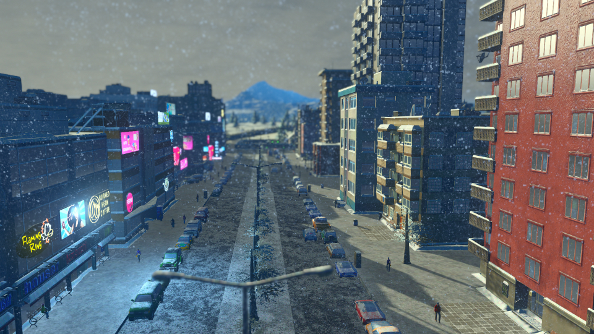
Managing traffic and roads is a constant, though admittedly rewarding, struggle in Skylines, even more than it is in other city-builders. This is no doubt down to Colossal Order’s history as the developer of the transport sim series, Cities in Motion. But even if you feel like you’ve got a handle on it now, Snowfall throws a new spanner in the works by making vehicles react to the weather. So if there’s a howling blizzard engulfing your city in snow, your citizens are going to have a tricky time getting through their commute.
Drivers are dedicated and probably Finnish, though, so they keep moving, never giving up, but it takes longer and the roads get jam-packed. This has a knock-on effect, messing up several city services. Police and fire coverage suffers as cops and firemen get stuck in traffic, letting crooks and flames run free; corpses end up stinking up homes because nobody can pick them up; garbage trucks struggle to pick up all the trash, so homes become filled with refuse; and generally everybody gets a bit upset.
Plows, then, are a godsend, especially if you can’t afford trams yet. This new transport option ignores snow but has a high maintenance cost than buses. The plows act a little bit like garbage trucks, in that you have to place a special version of the landfill, and then watch as the wee vehicles trundle down the roads, swallowing up snow instead of rubbish. Unlike garbage, however, snow melts, so these landfills don’t fill up nearly as quickly, and when it heats up, they become empty.
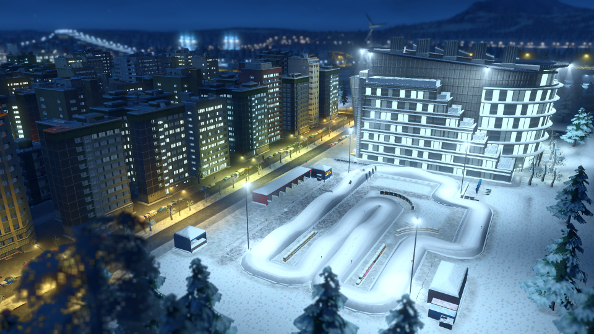
The second challenge is the temperature itself. Homes, offices and services can be conveniently heated by electricity, so at first there isn’t any need to do anything new. You plonk down turbines or power stations and everyone is happy. Everything in Cities: Skylines is interconnected, though, and that’s why problems crop up. For example, when the temperature plummets, demand for electricity soars, especially at night. A short term solution is using the day and night budget sliders introduced in After Dark. Invest more in electricity during the night, and people get to stay warm. A more permanent and cost effective solution, however, is constructing one of two new heat-providing buildings: the boiler plant or the geothermal plant. The former is cheaper, but the latter is greener. Heating the city this way does require quite a lot of cash, though, so it’s better to wait once you’re a bit more flush.
After many cities and countless hours, the rhythm of Cities: Skylines is something I’m used to. Snowfall, however, provides many welcome complications. I was spending a lot more money and worrying about a slew of new potential crises, forcing me to keep going back to my budget screen to make tiny tweaks or bring out the bulldozer to rearrange districts. It’s the same song, but with a few more instruments adding another layer of complexity.
Ice River was ticking along nicely. I’d unlocked some new areas, set up multiple transport methods like buses for long journeys and trams for travel within districts, and my citizens were more than content. Despite the chilly temperatures, they were even able to enjoy the diverse nightlife offered by my hip and happening leisure areas, which included new, winter-specific buildings like ice hockey rinks, snowmobile racetracks and little ski slopes. It was fast becoming a winter wonderland. But not for long.
As I looked down on my city, I knew it was time. Ice River was going to become a frosty nightmare. I cackled. Mr. Freeze would have been proud.

Destroying the fruits of all my labour was easy. Hours of work were undone in seconds. I simply stopped electricity from providing heat and turned off my heating plants. Civilization rapidly crumbled. It was like an avalanche, as service after service shut down because of the cold.
By the end of the first week, Ice River’s citizens were without power and water, schools and hospitals closed, shops went out of business, industry died. The interconnectedness that makes Cities: Skylines’ simulation believable also ensures that one big problem can shatter the entire infrastructure of a settlement like an unstoppable force of nature. People remained, though.
A week later, those brave people began to flee the frozen Hell in droves. Thousands of them every day. I could hardly even see the buildings for all the warning symbols, letting me know the countless issues facing each building, as well as the fact that they’d been abandoned. Life started to fade away. I looked at the traffic layer, which shows what roads are congested. No traffic issues whatsoever, it reported. Finally, I’d solved gridlock.
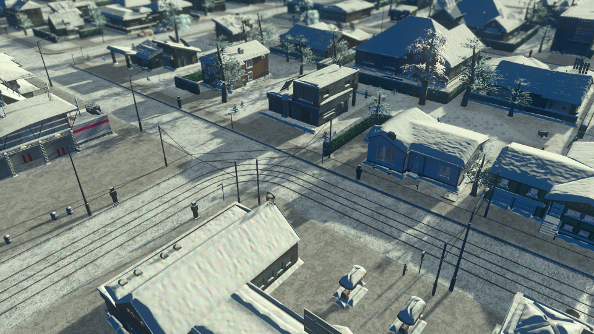
By week three of the nightmare, there was hardly a soul left in Ice River. 80 people stuck around. Maybe they had nowhere else to go, resigning themselves to a truly horrible fate. Zooming in, I was struck by how much it looked like a Soviet ghost town. I’d created Pripyat. The buildings were grey and dilapidated, the streets – once heaving with people and cars and lights – were devoid of all life. Snow blanketed everything.
As I gazed over my great work, I found myself oddly affected. I slowly skimmed empty highways, soulless avenues and decayed suburban estates, and I couldn’t see anyone or even a single car. It was haunting. A huge city, silent and alone.
Another blizzard started. I shivered.
